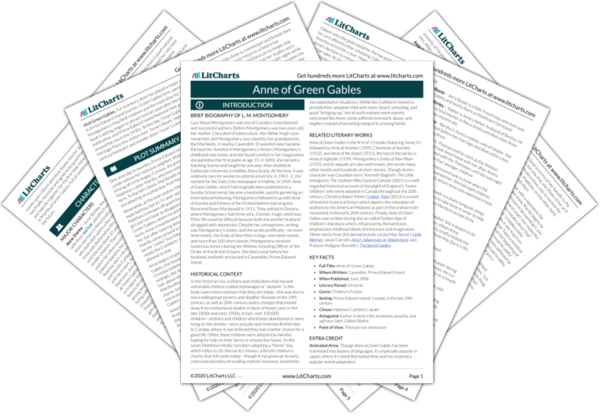AI ToolsNew
Tools to make learning and teaching easier
|
Previous
Chapter 26: The Story Club Is Formed
|
Anne of Green Gables: Chapter 27: Vanity and Vexation of Spirit Summary & Analysis |
Next
Chapter 28: An Unfortunate Lily Maid
|


Upgrade to unlock the analysis and theme tracking for all of Anne of Green GablesAnne of Green Gables!
Get LitCharts A+